He calls himself “grec”, “shawarma” or “döner”. But beyond these appellations behind which there are unique recipes, the kebab is much more than just an oriental sandwich.
Who has never succumbed to the temptation of a kebab? Whether it's a sudden desire, a dish's love or a recalcitrance of the motivation to cook, you always enjoy a good kebab. But did you know that kebab is much more than a fast-food meal prepared in the tiny shop around the corner of the street, lit by lights sometimes blasphemed by neon?
On the contrary, the kebab is an ancestral tradition that came straight from the East, delivered by immigration and directly appropriate by Europeans. Whatever we say, the kebab suffers only very little from its bad advertising. Indeed, it is about 11 kebabs that sell each second in France . No wonder when you know its average price is €4.84, tomato-onion salad, fries and sauce included...
But if its 1,000 calories (on average) cool more than one, it is important to know that much of these calories are brought by the new kebab options: fries and sauces. So, discover or rediscover with us the kebab, as it was created, from its origins to its current version, and even further...
The history of kebab, more surprising than it seems...
It is common to read that kebab comes from Germany and that he was born there in the 1970s. But it is not quite true. In reality, the real kebab comes from the Middle East, and especially from Turkey . In this country with the gastronomy dreadfully delicious, kebab is a traditional national dish, tasted daily.
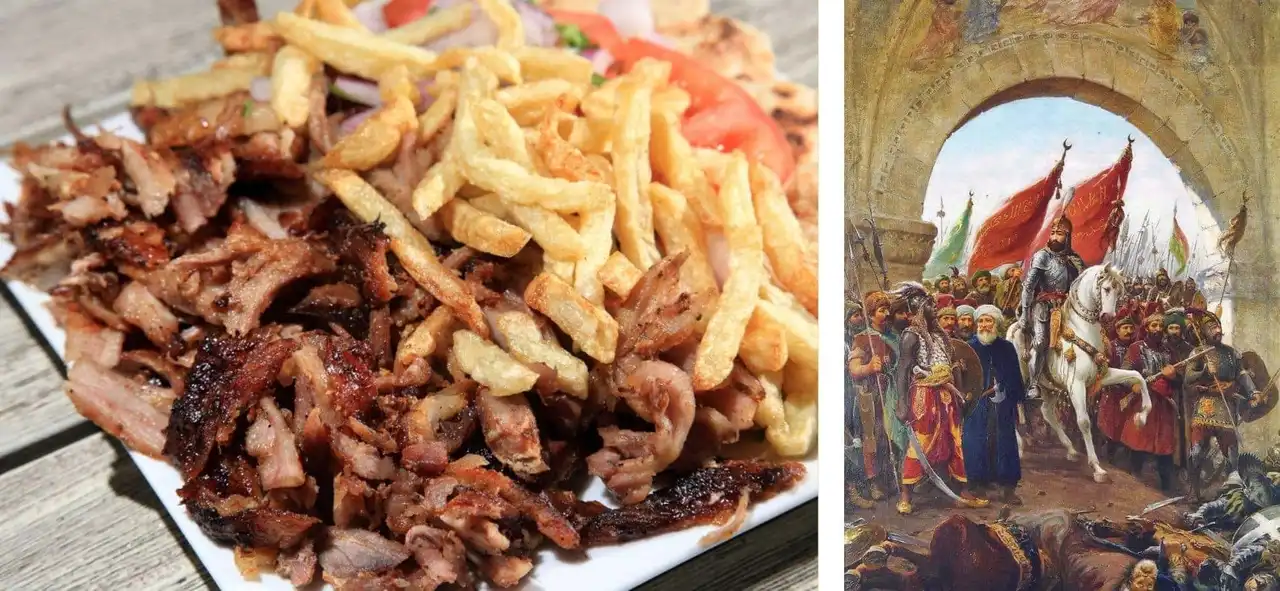
Find on the left: a kebab plate To the right: the Ottoman Empire, during the fall of Constantinople – Photo credits: Shutterstock – smoxx
The origin of the dish is not historically certified, only a few stories mention it without too much credit being attributed to it. However, according to these famous stories, the kebab would in fact be an invention of the soldiers of the Ottoman Empire (1299-1923) who would then have had the idea of cooking the meat at their disposal using their swords as pinch picks.
If this fun anecdote is not verifiable today, it nevertheless certifies the distant existence of the kebab.
Verticality on the horizon?
If today it is very common to see meat blocks that cook vertically according to a very classic brooch process, it should not be thought that it was always the case. Indeed, at the first fruits of kebab preparation, the meat brooch was cooked horizontally, as a chicken would be cooked today.
This is the even older technique, ancestor of the current kebab, of the Cağ Kebabı, which brought this concept of huge meat brooch into the culinary horizon. The meat was then taken by planting the skewer directly into the meat and cutting very thin slats. So small pins were obtained!
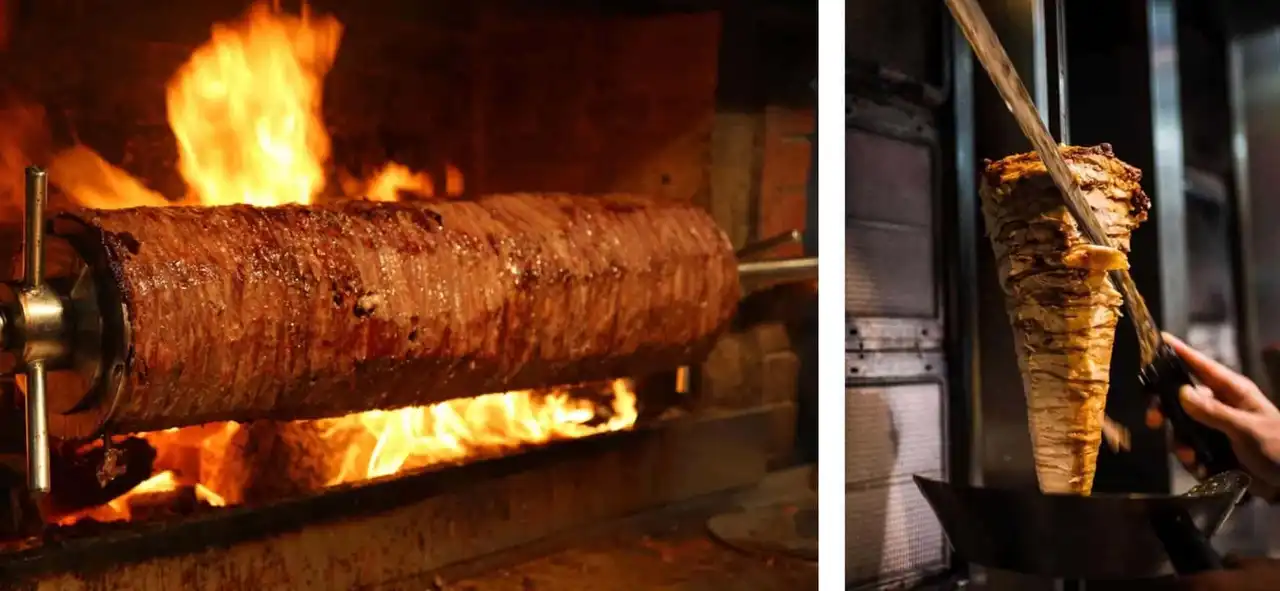
From the horizontal pin to vertical, the kebab constantly evolves Photo credits: Shutterstock – Captain Cobi Shanti Hesse
Finally, it is during the 19th century that the huge meat brooch will recover to become vertical. Certainly for practical questions: meat is much easier to cut so and there is no need to be expert in fine cutting to serve customers! In addition, vertical cooking, which is no less effective than horizontal cooking, makes it easier to recover fat.
Kebab, a culinary treat
Over the centuries, the kebab grows and evolves, it exports to neighbouring countries that eventually take ownership of the recipe. For example, in Lebanon, Syria or Syria Jordan , his name is shawarma and consumes most often in a bented pita bread.
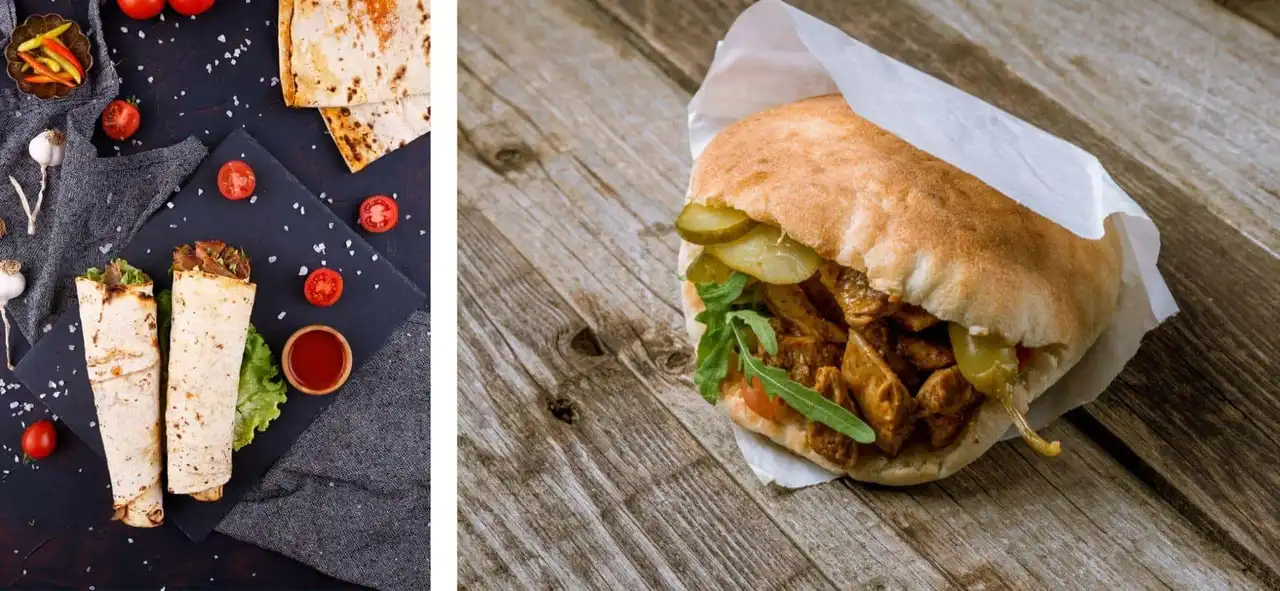
Find on the left: a kebab plate To the right: the Ottoman Empire, during the fall of Constantinople – Photo credits: Shutterstock – fatih likoglu Ratov Maxim
In Iran, kebab is proposed in several forms including barg , joujeh , ♪ or koubideh . Moreover, the koubideh , which takes a bit the form of a meat kefta (spicy chopped meat gathered in a single long piece on a skewer), is what the Iranians prefer and consume the most. In the Kurdish regions, kebab becomes the dürüm , where the meat tastes wrapped with a fine and grilled cake.
Then there are also other Turkish versions like the şiş kebap (chiche-kebab), which takes the exclusive shape of a pike (“ şiş” indicating the pin on which the cooked meat) or adana kebap which has the peculiarity of being very spiced and rich in spices.
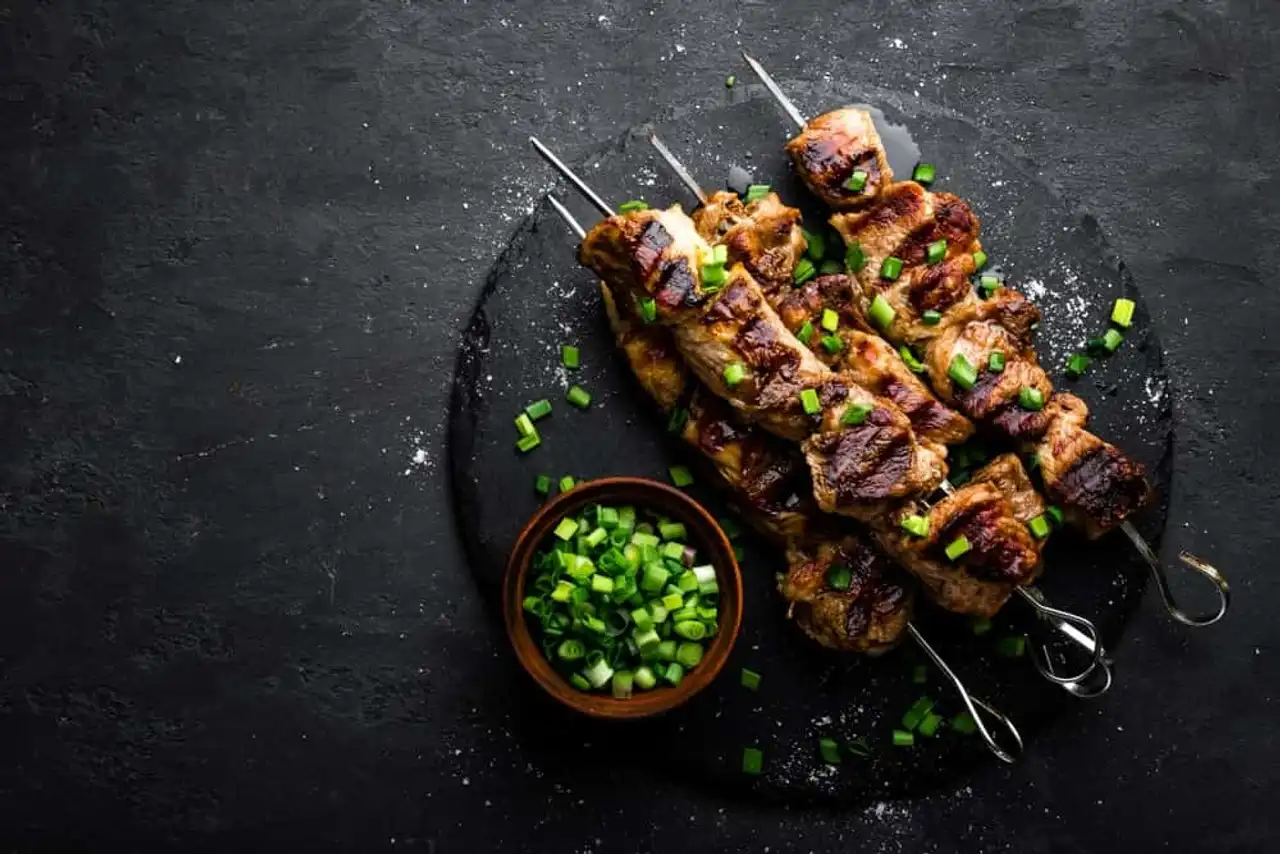
The famous chiche-kebab Photo credit: Shutterstock – Sea Wave
There are even a few recipes from kebab moose in India , ek kebab , where it is mixed meatballs with yoghurt and local spices.
All this to highlight the fact that the kebab, because of its simplicity of realization, has largely exported. The different Eastern cultures were able to integrate it, creating new recipes that could cross the centuries and the borders.
European and global success
The arrival of the kebab in Europe took place in the 1970s, thanks to a Turkish immigrant in Germany. Very inspired and clever, Mehmet Aygün of his real name, will create the döner kebab and the recipe of the white sauce that accompanies it. Today, the version of Mehmet Aygün is the most consumed in the world.

It was in Kreuzberg, one of the poorest districts in Berlin, that the Doner Kebab was born. Photo credit: Shutterstock – Christian Mueller
This is indeed the one that we know in France: grilled meat that is just cut, baked in a pita bread, with white sauce, the salad-tomate-onion trio, all served with a portion of fried and salted potatoes. To the great damn of our balance...
Traitors for everything and everywhere
Unfortunately, all good things bring their lot of bad things. In France, some extremist mentalities see the success of kebab in Europe and everywhere else. Indeed, these people identify kebab as a culinary or cultural threat.
Yet it is important to know that all the current cultures of the world come from tasty blends of genres, appropriations and various influences generated by the constant movement of human beings. Let's just remember...
Why do we call it “a Greek” in France?
Among the many appellations of kebab, it is true that in France it is named “grec” by a part of its consumers. Why will you say that, since the kebab finds its origins in the East, and the Greece is it only border?

The Latin Quarter, the cradle of the "Greek" in Paris Photo credit: Shutterstock – littlenySTOCK
Just because the first restaurants in kebabs opened their doors in the Greek quarter Paris , also named Latin Quarter. By abuse of language, the term “grec” has remained associated with kebab and over time, we have finally forgotten its origin!
From fast-food sandwich to the gastronomic plate
The kebab, and we're talking here about döner kebab , is often appreciated for its very practical aspect of food that eats on the thumb, to calve a wolf hunger, or to make a desire for junk food .
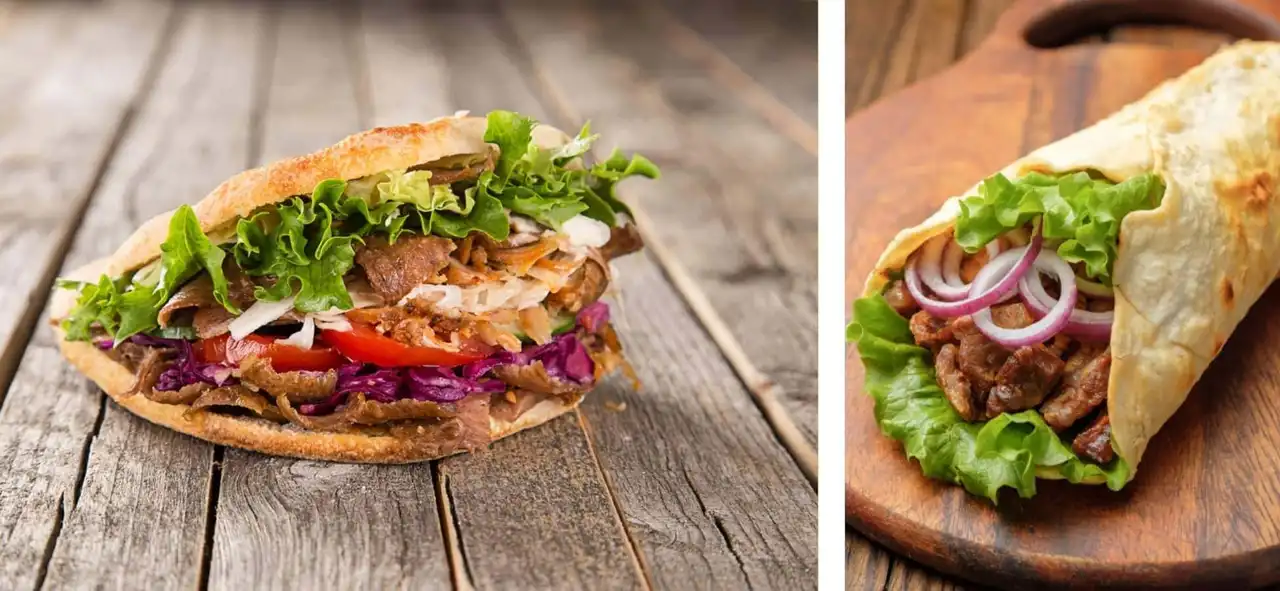
Two kebab sandwiches, most common versions – Photo credits: Shutterstock – Lukas Gojda
Its price, also very attractive to young people, attracts crowds. For less than 6€, you have the meat sandwich, salad, sauce, fries and even a drink. Although it is often sweet sodas that do not alleviate the final calorie note, all remains financially very reasonable when calculating the price/sasily ratio. This also explains its global success.
Yet we see more and more great chefs try to offer gastronomic versions of kebab. The bread is removed, the meat is changed, and the recipe is sublime. Many of them begin to appear on the menus of starred chefs who show themselves capable of much imagination.
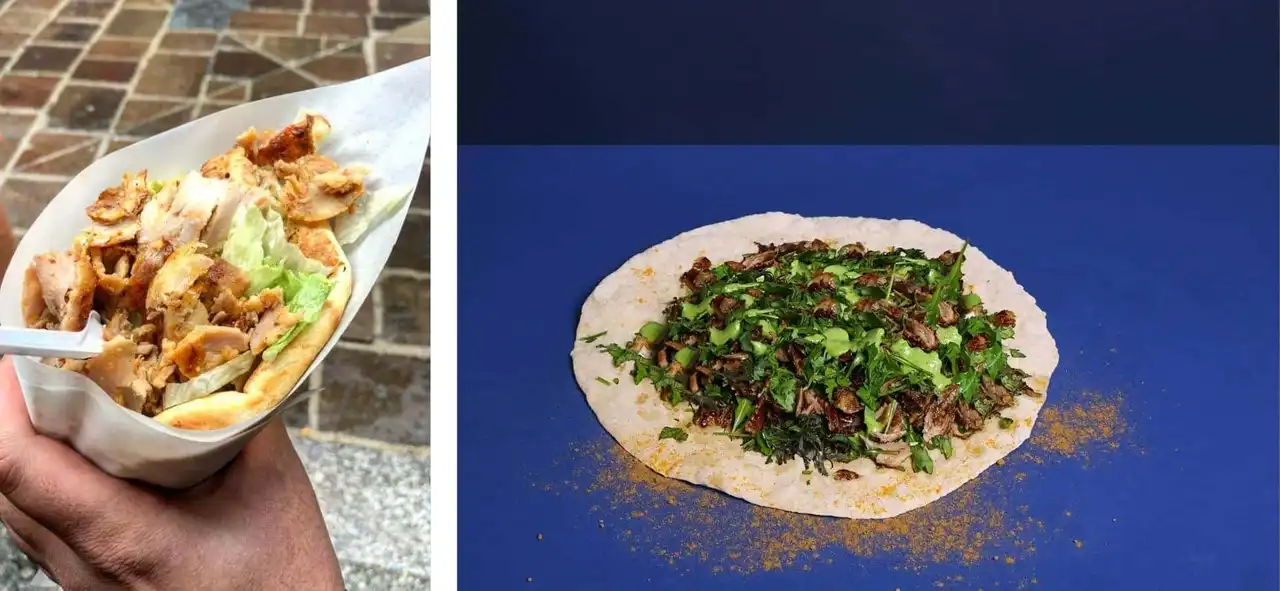
Find Photo credits: Facebook – Nabab Kebab Grilled Paris
For example, chef Karim Haidar of the Lebanese restaurant Askini, innovates by inventing a version of the kebab based on duck and pear meat. Of course, immediately, you say that the essence of the recipe is lost as long as the meat is changed.
But after all, if spices, taste, how to prepare or eat kebab remain the same, why not? The whole thing is to leave his mind open and to say that finally, the shawarma , koubideh and others döner kebab all come from an original recipe that their creators then modified.
If today there are so many different recipes and techniques, it is thanks to all these cooks who dared to offer something else!
Revisiting the kebab?
Moreover, kebab variants do not always take a traditional form of pita bread or meat served with tomato and chili. On the contrary, many of these revisits combine several culinary traditions with each other!
Have you ever seen a pizza or a whipped kebab meat? This is a often successful mix of two great traditional dishes, combined in one for the happiness of our taste buds! Also, the kebab exists in the form of accompaniment of linguini Like a carbonara sauce would.
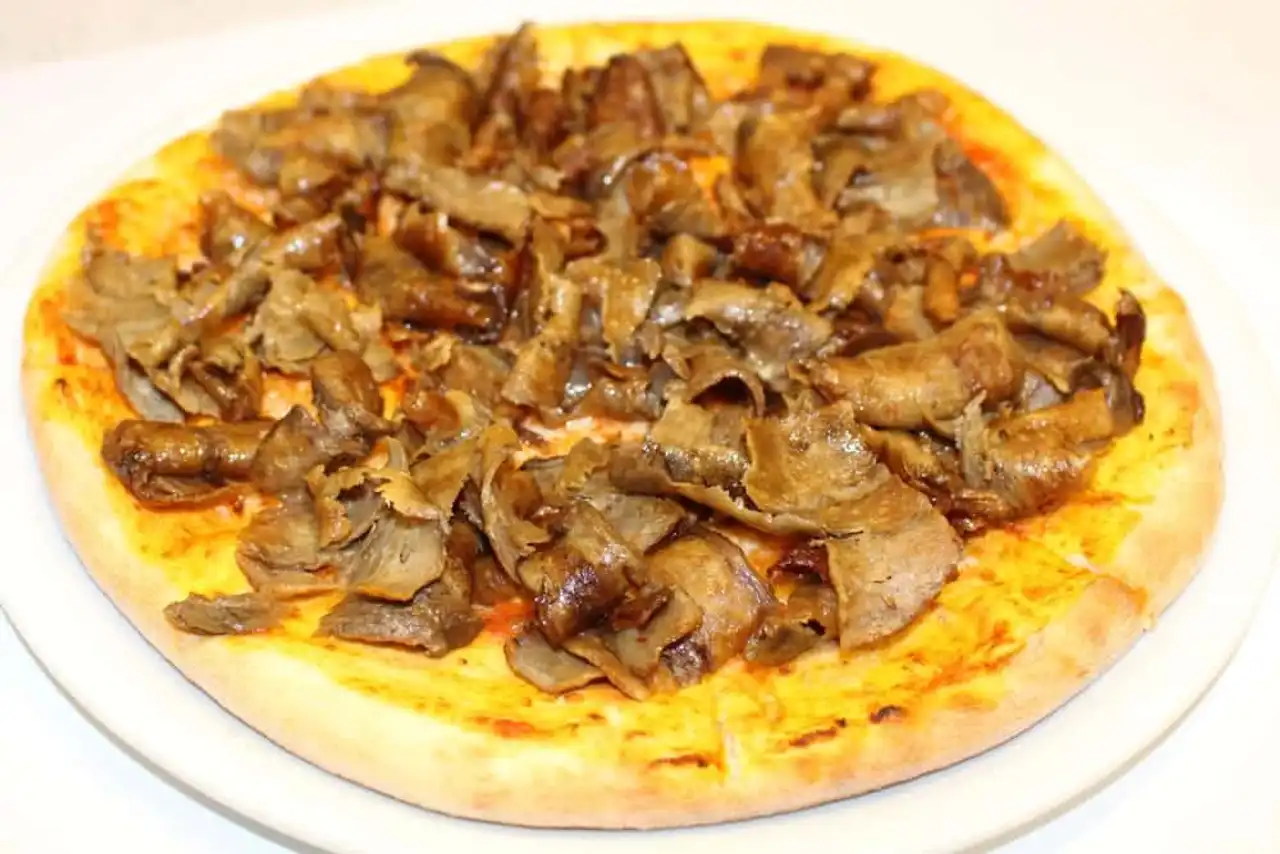
The pizza kebab, a dish that makes jasier Photo credit: Shutterstock – ustun ibisoglu
Revisiting the kebab recipe doesn’t cost much anyway: a little imagination and creativity, the tour is played!
A chic kebab and especially shock
About prices, if we have specified that kebab usually costs less than 6€ and that its national average barely reaches the €4.84, however, there is a kebab that denotes any understanding. It costs 835€. An exorbitant price you'll say. And you'd be right!
We discussed earlier the revisits, and the rather original recipes sometimes invented to give a new breath to the street-food recipe. Well, Chief Andy Bates understood this concept. In 2011, with a champagne kebab, safran and gold leaf, the chef pushed back the limits of the oriental sandwich. A luxurious result created on the occasion of the launch of a television culinary program... nothing but that.
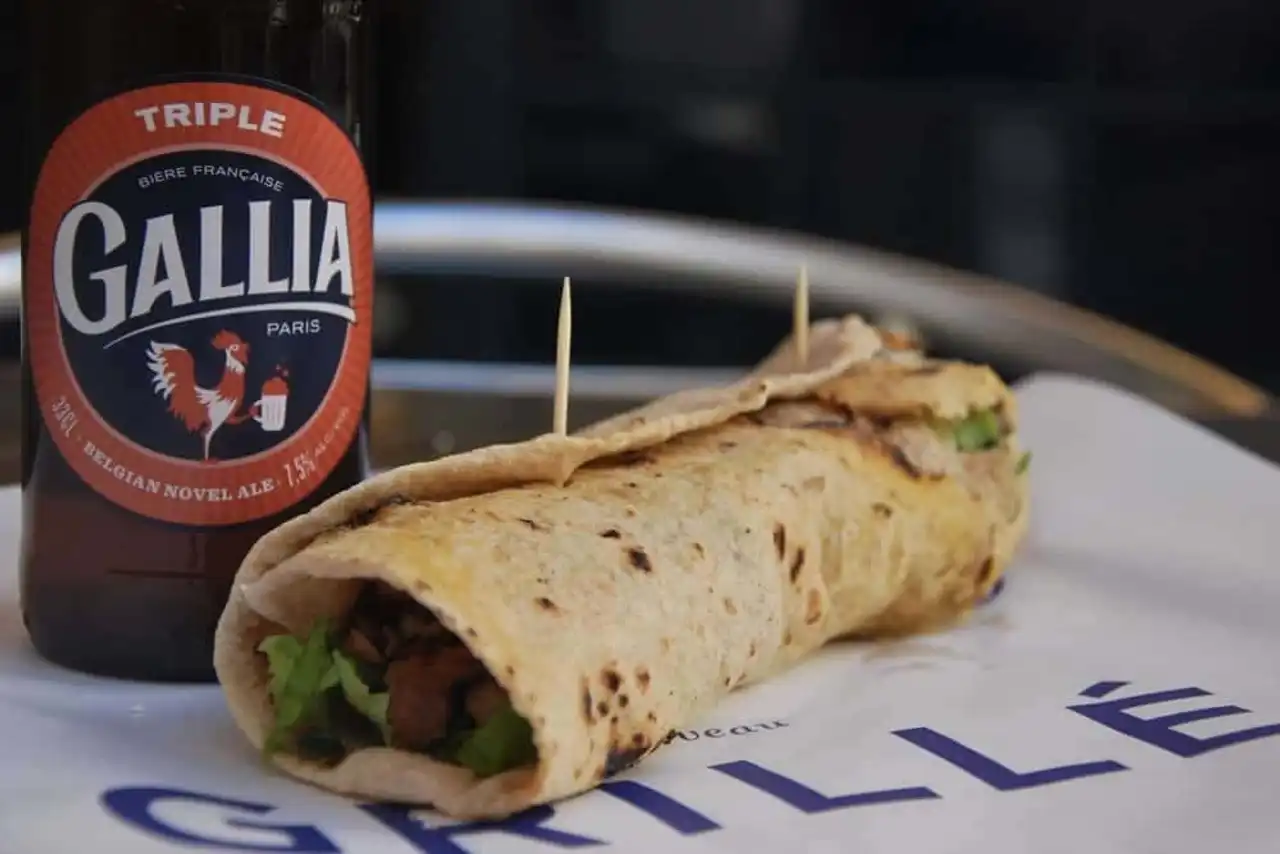
refined kebab, with a spelt cake Photo credit: Facebook – Grilled Paris
And in this continuity, but to a much lesser extent, there are today restaurants that offer high quality kebabs, such as Le Grillé. This restaurant, created in Paris and then deployed throughout France, is eager to integrate quality ingredients into its recipes for an optimal result.
The higher price (8€) is justified by the use of French meats, bread and cakes made from spelts and sauces entirely designed on site. And without surprise, fries served with the sandwich are also produced from local potatoes. However, nothing will ever worth a dish that you will make at home...
Our recipe for kebab, tested and approved only for you!
After this historical inventory, hunger is surely digging your stomach. The flavours and spices already tickle the nostrils and your body just needs to taste. And this time, you will be able to make your kebab yourself, thanks to our recipe, tested and approved by the team!
With regard to meat, it is up to you to choose the one that best suits you: chicken, lamb, calf, beef, and even pork. The whole thing is to select the meat(s) that correspond most to you, the rest is a matter that the marinade deals with! Depending on the meat chosen and also depending on the size of the pieces, you can consider cooking at the barbecue to get closer to the traditional technique.
Otherwise, a grill cooking will do the right thing. Just note that your meat must be cut rather finely, whether you choose slices or pieces.
We deliberately took the part of eating our kebab with a cake. Lighter, it does not increase the culinary experience. However, nothing prevents you from realizing instead a homemade pita bread (or purchased in store).
For meat marinade, ingredients and stages
- 1 very finely grated onion;
- 1 teaspoon of paprika;
- 2 tablespoons of cilantro ciseled;
- 1 teaspoon of curcuma coffee;
- 1 teaspoon of massage;
- 3 or 4 beautiful waxed fresh mint leaves;
- 1 yogurt to the Greek;
- 8 cl of olive oil;
- The half-citron juice;
- Salt and pepper.
Here it is simply a question of making a mixture of all ingredients. By getting this homogeneous marinade, all flavors will get married. In the mouth, the taste buds will dance and marvel!
For white sauce, ingredients and steps
-
1 yogurt to the Greek;
-
1 bottle of fresh garlic;
-
Salt and pepper;
-
1 tablespoon of chopped chives;
-
1 teaspoon or paprika (optional).
-
As with marinade, no complication in the realization of the white kebab sauce. Indeed, it is enough to mix everything in order to get a pretty homogeneous sauce. You can taste and adjust the spices according to your tastes. The main thing is that the sauce suits you and it properly accompanies marinated meat!
For the cake (dürüm), ingredients and stages
-
280 ml of warm water;
-
2 tablespoons of olive oil;
-
300 gr of white flour;
-
1 teaspoon of white sugar;
-
1⁄2 bag of dry baking yeast;
-
2 pinch of salt;
-
One big pinch of paprika.
-
Start by mixing sugar, yeast and water. Make sure the sugar and yeast dissolve well;
-
In a salad bowl, pour the flour, paprika and salt then mix them;
-
Form a well in the centre of the flour, and pour the olive oil there;
-
Before any petri, add a portion of the water (about one quarter). Perish;
-
Add the water small to small in this way, in order to obtain in the end a non-sticky elastic paste. Do not hesitate to add flour if the paste sticks, or water if it is too dry. That said, always go slowly, by bearings;
-
Once the dough is ready, form small balls that you will then place on a stuffed towel (or plate) ;
-
Recover the balls and let pose about 30 minutes;
-
The rest time elapsed, spread each ball so as to form a fine and round galette with a thickness of about 3 mm;
-
For cooking, put the cakes in a pan sufficiently large and very hot, without fat;
-
The cakes must remain white, and are ready when they have very slightly golden, on both sides.
For the preparation of the long-awaited kebab
- Plan a small mixture of green salad, cut fresh tomato and chopped red onion. No need to season it, these flavours don’t need taste excelers!
- Bake your meat marinated according to the chosen cooking method (barbecue, grill). If you want to make skewers, don’t forget the peaks. And in case you opted for a mixture of several meats, alternate them on the skewer!
- To finish, take a cooked cake, have some salad, some of your cooked marinated meat (removed from skewers if necessary) and a white sauce... Get settled!
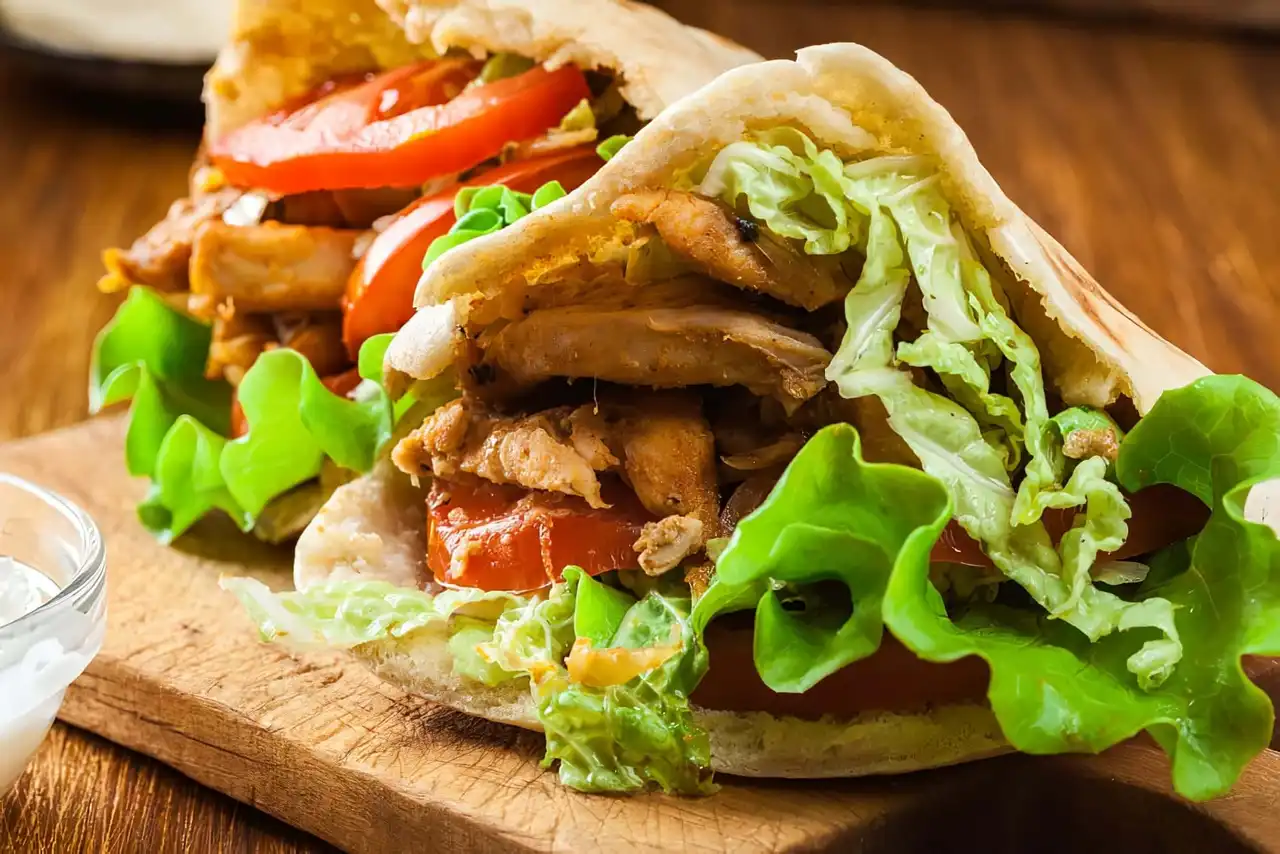







Loading comments ...